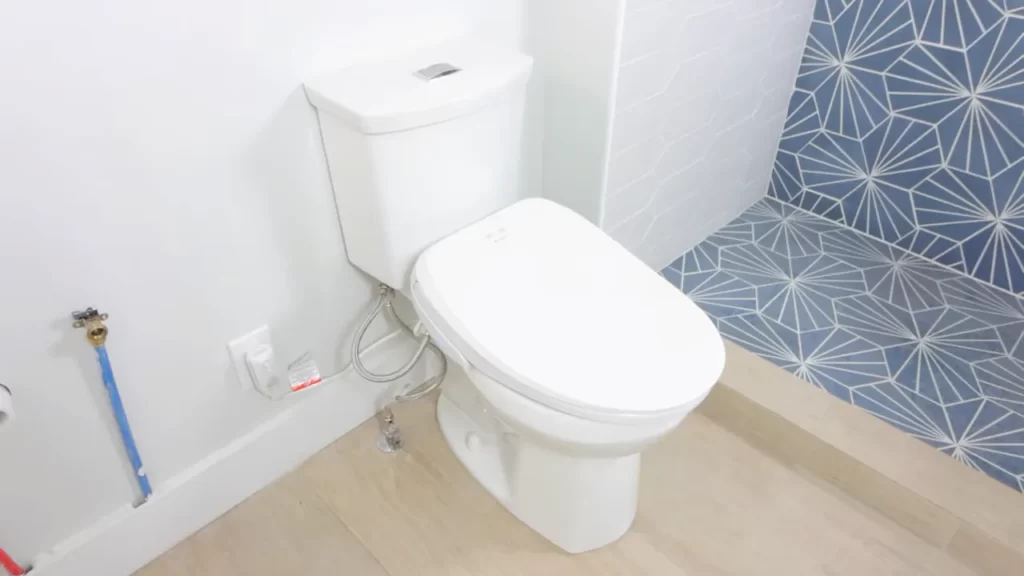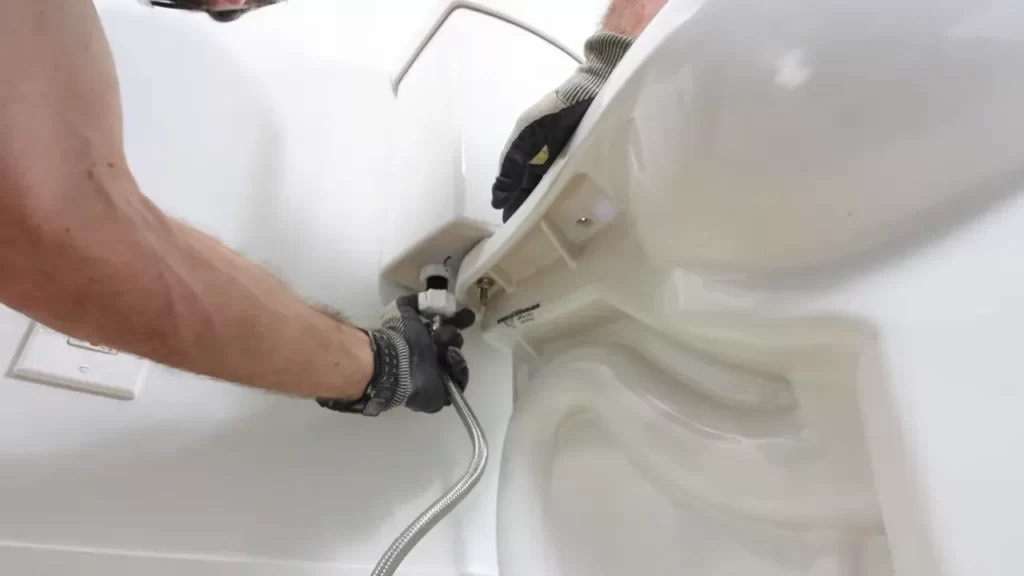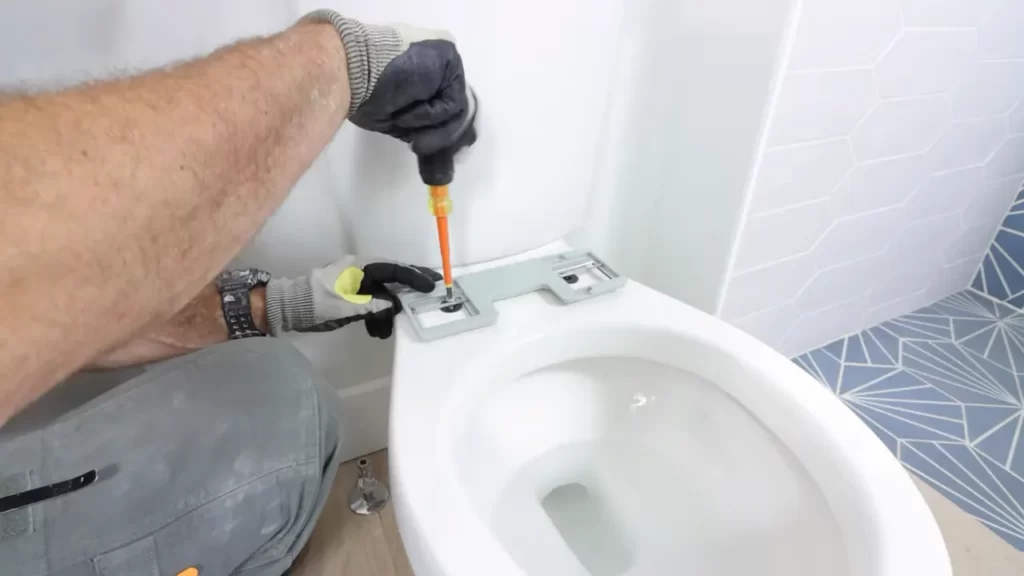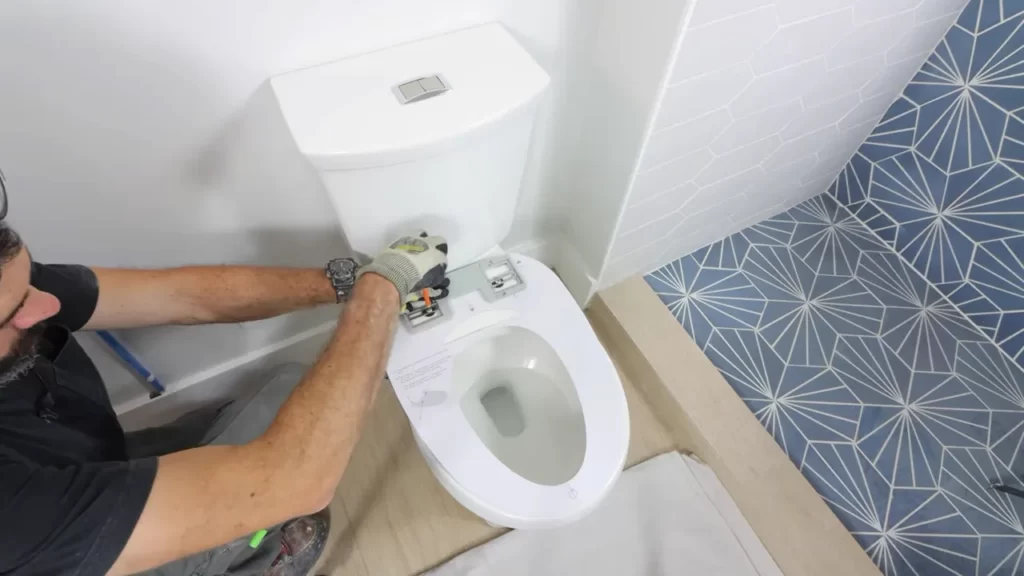To install a bidet toilet seat, follow the manufacturer’s instructions precisely, including connecting the water supply and power source. Bidet toilet seats are a convenient and hygienic addition to any bathroom.
With their adjustable water temperature and pressure settings, they offer a comfortable and thorough cleansing experience. If you are considering installing a bidet toilet seat in your home, this guide will provide you with step-by-step instructions to ensure a successful installation.
By following these instructions carefully, you can enjoy the benefits of a bidet toilet seat in no time. So, let’s get started!
Assessing Compatibility And Gathering Tools
Before you can begin the installation process of a bidet toilet seat, it’s important to assess the compatibility of your toilet and gather all the necessary tools. This step is crucial to ensure a smooth and successful installation. Let’s dive into the details of each:
Checking if your toilet is compatible with bidet toilet seat installation
To determine if your toilet is compatible with a bidet toilet seat installation, you need to focus on a few key factors:
- Toilet Bowl Shape: Check the shape of your toilet bowl. Bidet toilet seats are generally designed to fit both round and elongated toilet bowls. Measure the distance from the bolt holes to the front of the toilet bowl to confirm the shape.
- Water Supply: Confirm if your toilet has a water supply connection near the tank. Most bidet toilet seats require a water supply connection to function properly.
- Electrical Outlet: Some bidet toilet seats also require an electrical outlet for power. Make sure you have an electrical outlet available near the toilet for this purpose. If not, look for bidet toilet seats that operate using batteries.
By assessing these factors, you can determine the compatibility of your toilet with a bidet toilet seat installation. If your toilet meets the requirements, you can proceed with gathering the necessary tools.
Gathering the necessary tools for the installation process
To ensure a smooth installation process, it’s important to gather all the necessary tools beforehand. Here’s a list of tools you’ll need:
| Tools |
|---|
| Adjustable wrench |
| Phillips and flat-head screwdrivers |
| Teflon tape |
| Bucket or towels |
| Level |
| Masking tape |
| Marker |
| Water supply line (if not provided with the bidet toilet seat) |
| Electrical extension cord (if the bidet toilet seat requires an electrical outlet) |
Having these tools ready will save you time and ensure a hassle-free installation process.
Now that you’ve assessed the compatibility of your toilet and gathered all the necessary tools, you’re one step closer to installing your bidet toilet seat. In the next section, we’ll walk you through the actual installation process in detail.

Removing The Existing Toilet Seat
When it comes to installing a bidet toilet seat, the first step is to remove the existing toilet seat. This process can be completed safely and efficiently by following a few simple steps.
Removing the old toilet seat safely and efficiently
To remove the old toilet seat, follow these steps:
- Start by lifting the seat and examining how it is attached to the toilet bowl.
- Locate the bolts that secure the toilet seat to the bowl.
- Using a screwdriver or wrench, loosen and remove the nuts that secure the bolts in place.
- Once the nuts are removed, carefully lift the old toilet seat straight up and off the bowl.
By following these steps, you can safely remove the old toilet seat without causing any damage to the bowl or other components.
Cleaning the toilet bowl before proceeding with the installation
Before proceeding with the installation of your new bidet toilet seat, it’s important to thoroughly clean the toilet bowl. This ensures proper hygiene and prepares the surface for the installation process. To clean the toilet bowl:
- Put on gloves to protect your hands.
- Using a toilet bowl cleaner, apply the product to the inner surface of the bowl.
- Scrub the bowl using a toilet brush, paying attention to areas under the rim and along the sides.
- Flush the toilet to rinse away the cleaner, repeating the process if necessary.
By taking the time to clean the toilet bowl before installation, you can ensure a clean and sanitary environment for the installation of your new bidet toilet seat.

Installing The Bidet Toilet Seat
Installing a bidet toilet seat can be a simple and efficient way to upgrade your bathroom, providing improved cleanliness and comfort. Once you have purchased a bidet toilet seat that suits your needs, it’s time to install it. In this section, we will guide you through the process of installing a bidet toilet seat, step by step. We will cover important aspects such as correctly positioning the seat on the toilet bowl, connecting the water supply, and adjusting the settings and preferences of your bidet toilet seat.
Positioning the bidet toilet seat correctly on the toilet bowl
The first step in installing a bidet toilet seat is to carefully position it on the toilet bowl. Take note of the shape and size of your toilet bowl to ensure a proper fit. Place the bidet seat on the toilet bowl, making sure the hinges are aligned with the mounting holes.
Connecting the water supply and ensuring secure connections
Once the bidet toilet seat is properly positioned, it’s time to connect the water supply. Locate the water supply valve behind the toilet. Turn off the water supply by twisting the valve clockwise. Next, find the water supply hose attached to the bottom of the toilet tank. Disconnect the hose from the tank. Attach the bidet seat’s T-valve to the water supply valve, making sure it is securely tightened. Reconnect the water supply hose to the T-valve, ensuring a tight and secure connection.
If your bidet toilet seat requires an electrical connection, locate an electrical outlet near the toilet and plug in the bidet seat’s power cord.
Adjusting the settings and preferences on the bidet toilet seat
With the bidet toilet seat securely connected to the water supply, you can now adjust the settings and preferences based on your individual needs. These settings may vary depending on the model of your bidet seat, but typically include options such as water pressure, water temperature, nozzle position, and spray patterns.
To adjust these settings, refer to the manufacturer’s instructions or control panel located on the bidet seat. Experiment with different settings to find the combination that offers you the most comfort and cleanliness.
Installing a bidet toilet seat is a straightforward process that can greatly enhance your bathroom experience. By correctly positioning the seat on the toilet bowl, connecting the water supply with secure connections, and adjusting the settings to your preference, you can enjoy the benefits of a bidet toilet seat in no time.

Checking For Leaks And Testing The Bidet Toilet Seat
Once you have successfully installed your new bidet toilet seat, it is crucial to check for any leaks and ensure that the bidet is functioning properly. This step is essential to avoid any unwanted surprises and to ensure that your bidet toilet seat provides you with the ultimate comfort and hygiene.
Inspecting for any leaks after installation
After the installation, it is important to carefully inspect the bidet toilet seat for any potential leaks. Even a small leak can result in water damage and inconvenience.
Here are the steps to inspect for leaks:
- First, visually examine the area around the bidet toilet seat for any signs of water accumulation or dampness. Check the connections between the bidet and the toilet carefully.
- Run your hand along the connections to feel for any moisture. If you notice any, it could indicate a leak.
- If you suspect a leak, try tightening the connections gently to see if it resolves the issue. However, be cautious not to overtighten, as it may cause damage.
- If tightening the connections doesn’t solve the problem, you may need to consult a professional plumber to troubleshoot and fix the leak.
Testing the bidet toilet seat to ensure proper functioning
After confirming that there are no leaks, it’s time to test the bidet toilet seat to ensure it is functioning properly. This step is crucial for your comfort and satisfaction with the installed bidet.
Here’s how you can test the bidet toilet seat:
- Sit on the toilet and activate the bidet by following the manufacturer’s instructions. Pay attention to the water pressure and temperature to ensure they are to your liking.
- Adjust the different bidet features, such as the water pressure, nozzle position, and temperature if applicable. Make sure all the functions work as intended.
- Test the bidet’s additional features if your model has them, such as air dryer or deodorizer. Check if they are functioning properly.
If you notice any issues during the testing phase, consult the bidet toilet seat’s user manual for troubleshooting steps. If the problem persists, get in touch with the manufacturer’s customer support or a professional plumber for assistance.
By checking for leaks and testing the bidet toilet seat after installation, you can ensure a hassle-free experience and enjoy the numerous benefits of bidet hygiene. Take the time to perform this important step, and you’ll be rewarded with a refreshing and sanitary bathroom experience.

Troubleshooting Common Installation Issues
Addressing Potential Problems During Installation
Installing a bidet toilet seat can be a straightforward process, but like with any home improvement project, you may encounter a few challenges along the way. In this section, we will discuss some of the common installation issues that you may face and provide troubleshooting tips to help you overcome them.
Troubleshooting Common Issues with the Bidet Toilet Seat
During the installation of a bidet toilet seat, various issues can arise that may require your attention. Here are some common problems you may encounter and the steps you can take to resolve them.
Water Leakage
One of the most common issues during bidet toilet seat installation is water leakage. It can be frustrating to find water pooling around the base of the seat after the installation. To address this issue:
- Ensure that the water supply valve is fully closed before starting the installation.
- Double-check the connections between the bidet seat and the existing water supply line. Make sure they are tightly secured and without any visible leaks.
- If you notice a leak from the connections, try tightening them carefully with a wrench. Do not overtighten, as it may cause damage.
- If the leak persists, you may need to replace the washers or gaskets to ensure a proper seal.
Difficulty in Securing the Bidet Seat
Securing the bidet seat to the toilet bowl can be challenging, especially if the toilet has an irregular shape or an unconventional mounting system. Follow these steps to address this issue:
- Refer to the manufacturer’s instructions for the specific guidelines on how to attach the bidet seat to your toilet.
- Make sure the mounting brackets align properly with the holes on the toilet bowl.
- If the seat wobbles or doesn’t secure tightly, try adjusting the position of the mounting brackets.
- In some cases, you may need to use alternate mounting options, such as adhesive pads or additional hardware provided by the manufacturer.
Inadequate Water Pressure or Temperature
If you find that the water pressure or temperature is not satisfactory, follow these troubleshooting tips:
- Check the water supply valve to ensure it is fully open.
- Verify that the bidet seat is properly connected to the water supply and that there are no obstructions or kinks in the hose.
- If your bidet seat features adjustable water pressure and temperature settings, make sure they are set to your desired levels.
- If the issue persists, consider consulting the manufacturer’s customer support for further assistance.
By addressing these common installation issues, you can ensure a smooth and successful installation of your bidet toilet seat. Remember to refer to the manufacturer’s instructions and seek professional help if needed. With a little troubleshooting, you’ll soon be enjoying the comfort and convenience of your new bidet seat.
Cleaning And Maintenance Tips For Bidet Toilet Seats
Proper cleaning and maintenance of your bidet toilet seat are essential for ensuring its longevity and optimal performance. By following these cleaning techniques and regular maintenance tips, you can keep your bidet toilet seat in pristine condition for years to come.
1. Proper cleaning techniques for bidet toilet seats
When it comes to cleaning your bidet toilet seat, it’s important to use the right techniques and products to avoid damaging the surface and components. Follow these steps for a thorough yet gentle cleaning:
- Start by turning off the water supply and unplugging the bidet seat from the power source. Safety should always be a priority.
- Use a mild, non-abrasive cleaner and a soft cloth to wipe down the seat, controls, and remote (if applicable). Avoid using harsh chemicals or rough materials that could scratch or deteriorate the surface.
- Pay special attention to the nozzles and spray wand. Gently clean these areas with a toothbrush or a small cleaning brush to remove any build-up or residue.
- Rinse the bidet seat thoroughly with warm water to ensure all cleaning agents are removed.
- Dry the bidet seat completely before reconnecting it to the power source and turning on the water supply.
By following these proper cleaning techniques, you can maintain the cleanliness of your bidet toilet seat and extend its lifespan.
2. Regular maintenance tips to keep the bidet toilet seat in optimal condition
In addition to proper cleaning, regular maintenance is crucial for keeping your bidet toilet seat in optimal condition. Here are some maintenance tips to incorporate into your routine:
- Inspect the water hoses and connections regularly to ensure there are no leaks or damage.
- Check the nozzles for any clogs or debris buildup. If necessary, use a pin or needle to clear the blockage gently.
- Test the functionality of the bidet seat periodically to ensure all features and controls are working correctly.
- Consider descaling the bidet seat on a regular basis, especially if you live in an area with hard water. Follow the manufacturer’s instructions for descaling methods and frequency.
- If you encounter any issues or notice any changes in performance, consult the manufacturer’s manual or contact their customer support for assistance.
By following these regular maintenance tips, you can prevent potential problems and ensure that your bidet toilet seat remains in excellent condition.
Additional Considerations And Precautions
Installing a bidet toilet seat can be a straightforward process if you follow the right steps and take into account some important considerations and precautions. Safety should always be your top priority, so let’s start with some essential safety precautions to follow during the installation.
Safety precautions to follow during bidet toilet seat installation
- Turn off the water supply: Before you start the installation process, make sure to turn off the water supply to your toilet. This will help prevent any accidental water leaks or damage while you work on installing the bidet seat.
- Read the instruction manual: Each bidet toilet seat may come with specific installation instructions. Carefully read the instruction manual provided by the manufacturer to understand the installation process and any specific precautions or requirements.
- Use proper tools: Always use the appropriate tools recommended by the manufacturer to ensure a safe and secure installation. Using improper tools can lead to damage or injury.
- Ensure stability: While installing the bidet seat, make sure it is securely attached to the toilet bowl. Check and tighten all the connections and bolts to ensure the seat remains stable during use.
- Double-check wiring connections: If your bidet seat includes electrical components, such as a remote control or heated seat, ensure that all wiring connections are properly secured and insulated. This will help prevent any electrical hazards.
Now that you’re aware of the safety precautions, let’s consider some additional aspects to ensure a successful bidet toilet seat installation.
Additional considerations for a successful installation process
Here are a few additional considerations to keep in mind for a smooth and hassle-free bidet toilet seat installation:
- Compatibility: Ensure that the bidet seat you are installing is compatible with your existing toilet. Check the dimensions, shape, and mounting options to make sure it will fit properly.
- Water source: Depending on the type of bidet seat, you may require a direct water source or an additional water supply connection. Assess your plumbing system and make any necessary adjustments to accommodate the bidet seat’s water requirements.
- Seat adjustment: Take some time to adjust the position and angle of the bidet seat to ensure optimal comfort and functionality. Consider your personal preferences and make necessary adjustments during the installation process.
- Test functionality: After completing the installation, test the functionality of the bidet seat to ensure all features are working correctly. Check water temperature, pressure, and any additional functions to guarantee a satisfactory experience.
Following these additional considerations and precautions will help you achieve a successful bidet toilet seat installation. Remember to always prioritize safety and refer to the manufacturer’s instructions for specific guidance. With careful planning and attention to detail, you’ll soon be enjoying the benefits of a bidet toilet seat in your own bathroom.
Frequently Asked Questions
Can You Install A Bidet Seat On Any Toilet?
Yes, you can install a bidet seat on any toilet.
Are Bidet Seats Easy To Install?
Yes, bidet seats are easy to install. They can be easily attached to an existing toilet using basic household tools. No special plumbing or professional assistance is required. Just follow the detailed instructions provided with the bidet seat, and you’ll have it installed in no time.
What Plumbing Is Needed For A Bidet?
Bidets require a water supply line and proper drainage for installation. Usually, a bidet requires a separate hot and cold water connection as well as a GFCI protected electrical outlet nearby for some electronic bidets. It’s important to consult a professional plumber to ensure proper installation.
How Do You Install A Bidet For Dummies?
To install a bidet for dummies, follow these simple steps: 1. Turn off the water supply. 2. Remove your existing toilet seat. 3. Install the bidet seat or attachment following the instructions provided. 4. Connect the water supply hose and tighten the fittings.
5. Turn the water supply back on and test the bidet.
Conclusion
Installing a bidet toilet seat might seem like a daunting task, but by following these simple steps, you can easily transform your bathroom experience. From gathering the necessary tools to securely attaching the seat, this guide has provided detailed instructions for a successful installation.
By taking care of your personal hygiene in a more hygienic and eco-friendly way, you’re contributing to a cleaner and healthier environment. So, why wait? Start enjoying the luxurious comfort of a bidet toilet seat today!
